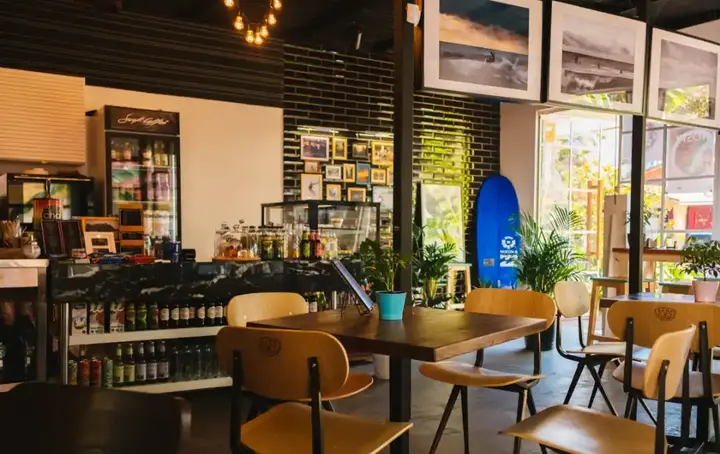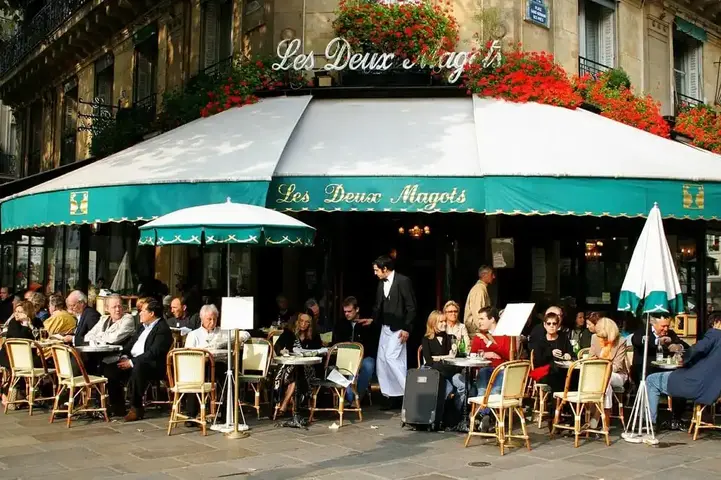Why do most restaurant and café projects fail?

The failure of most restaurant and café projects is due to many interrelated factors, some related to planning, others related to management, and others related to market conditions. Some of the main reasons include:
Lack of planning
Unfortunately, most of the initiators of these projects lack experience in the first place, they see it as a successful project in any case, which is not true. The most famous reasons for planning factors are most often:
• Poor feasibility study: Entrepreneurs sometimes neglect to conduct a comprehensive feasibility study to assess the feasibility of the project and the potential risks.
• Ill-considered business plan: The business plan lacks clarity and realism regarding financial objectives, marketing strategies and operational processes.
Recommend
• Choosing the wrong location: Choosing a location that is not suitable for visibility, accessibility or target customer base.
Poor management
• Lack of experience: Lack of experience in managing restaurants or cafes, or an understanding of financial and operational challenges.
• Poor cash flow management: lack of effective control over expenditures and revenues, leading to problems with budgets.
• Poor customer service skills: Failure to provide excellent customer service that meets customer needs and exceeds their expectations.
Market Challenges
• Intense competition: The presence of a large number of similar restaurants and cafes in the area, which makes it difficult to exclusivity and attract customers.
• Changes in consumer tastes: Changing consumer attitudes and preferences, which requires restaurants and cafes to adapt and update constantly.
• Economic factors: External economic influences such as recession or inflation that can affect the spending behavior of consumers.
Technical factors
• Unsatisfactory food quality: Failure to provide food with high quality and quality that meets customer expectations.
• Poor restaurant maintenance: Neglecting the cleanliness, décor and atmosphere of the restaurant, which creates an unattractive experience for customers.
• Lack of marketing and promotion: Not effectively marketing and promoting the restaurant to attract customers and build brand awareness.
Exaggerated publicity
You see an ad on a social media site, containing dazzling photos and videos that may not have been filmed from the restaurant or café. Rather, the e-marketer deliberately mixes advertising with complex techniques that stimulate humans, stimulate hunger in them, and provoke the sense of taste in one way or another.
Order food from that restaurant, or go to that café to find something else entirely!
This scenario is repeated often, especially with the young investor relying on false or cosmetic advertising at the beginning of the project. Thus, the place loses its credibility, as the customer is not stupid and will certainly discover the difference between what he saw and felt, and what he found.
New Liars or Food-Bloggers

In the era of the growth of social networks of all kinds, we have seen a kind of so-called content creators – and most have nothing to do with that, specializing in reviewing food or drinks, or even the shape of a restaurant or café. It has truly become the profession of the unemployed!
From the international food reviewers in the major press and media organizations, the idea came in the first place, but in the form of a terrible monstrosity!
Just for the number of his followers – often – the opinion of this or that character is rented, and of course it is by prior agreement.
What really happens is extreme exaggeration that is often best described as "just a description of food" in the form of an advertisement with some suspenseful movements, editing techniques, image enhancement and coloring, and so on.
The main problem is that really now many people have realized that such people should not be relied upon for any opinion, because in fact they are just clowns cheering for the product, food or place. A corrupt element that has plagued the modern world, deceived people for some time, and the facts about them are now unfolding.
How to avoid the failure of a restaurant or café project?
The success of any restaurant depends on a set of interrelated factors that ensure that it gets satisfied customers and achieves sustainable profits. Take care of the following factors, and you will have come a long way from the success of your project; the most important of these factors include:
1. Deliver really high-quality food
• Taste: Food should be delicious and attractive to customers in terms of flavor, smell and appearance.
• Ingredients: Use fresh, high-quality ingredients that maintain the nutritional value of dishes.
• Diversity: Offering a menu that caters to different tastes and budgets of customers, taking into account vegetarian, gluten-free and other special dietary needs.
• Presentation: Presenting food in an engaging way that enhances the dining experience positively.
2. Excellent customer service
• Includes warm welcome: welcoming customers with a smile and warmth and creating a welcoming and friendly atmosphere.
• Fast and efficient service: meet customer requests accurately and quickly while paying attention to their needs and desires.
• Trained staff: Provide staff that is well trained in customer service skills and demonstrates knowledge of menu and dishes.
• Interaction with customers: communicate effectively with customers and listen to their feedback and suggestions.
3. Distinctive ambience
• Decoration: Comfortable and attractive décor design that matches the type of restaurant and its brand.
• Cleanliness: Keep the restaurant clean and tidy inside and out.
• Music: Play soft and relaxing music that suits the atmosphere of the restaurant.
• Lighting: Using appropriate lighting that creates a warm and romantic atmosphere.
4. Convenient location
• Accessibility: Choose a location that is easily accessible and visible to customers.
• Target customer base: Choose a location where the target audience of customers is located.
• Competition: Analyze competition in the region and choose a location that allows the restaurant to be unique and attract customers.
![]()
A book that may interest you - don't be too nice
A book that might interest you - Too Nice for Your Own Good more- ADVERTISEMENT
![]()
My strategies for developing business confidence
Asking for a raise taught me a powerful lesson: confidence and self-advocacy matter. Despite battling impostor syndrome and anxiety, I learned to challenge my inner critic, celebrate my wins, and take risks. That one bold step led to growth, success, and a stronger belief in myself ever since. more- ADVERTISEMENT
![]()
Human population growth: where are we now?
As the global population heads toward 10.5 billion by 2100, challenges like aging populations, food security, and environmental strain grow. While prosperity helps lower fertility, it also increases environmental harm. Addressing climate change, boosting food production sustainably, and shifting to low-carbon energy are key to balancing growth and the planet’s health. more- ADVERTISEMENT
![]()
How to outperform everyone by acting like a CEO
Success isn't accidental—it’s built through CEO-like habits. Think strategically, decide with confidence, build strong networks, and manage time smartly. These executive behaviors shape a mindset that helps you grow, lead, and stand out in your career. Start adopting them now to pave your path to excellence. more- ADVERTISEMENT
![]()
Proven ways to build your confidence
Self-confidence isn't about being perfect—it's about knowing your strengths, embracing your flaws, and growing through experience. Celebrate small wins, speak kindly to yourself, and keep learning. With each step forward, you’ll prove to yourself that you are capable and ready for life’s challenges. more- ADVERTISEMENT
![]()
Motivation: How to Start and Stay Motivated
Motivation: How to get started and staying motivated more- ADVERTISEMENT
![]()
The best ChatGPT alternatives, including what is free
ChatGPT is an advanced language AI revolutionizing communication and creativity with human-like conversations and text generation. Alongside it, impressive free alternatives like Google's Bard, Jasper Chat, Bing AI, and Perplexity AI offer unique features—from creative writing to fact-based search—making AI tools more accessible, powerful, and tailored to user needs. more- ADVERTISEMENT
![]()
Can you really master a skill by learning for one hour a day?
Can You Really Master a Skill by Learning for One Hour a Day? more- ADVERTISEMENT
![]()
Belgrade, Serbia: Europe's new food capital?
Belgrade is now a buzzing foodie hotspot where creative chefs like Vanya Pushkar and Filip Seric reinvent traditional Serbian dishes with fresh flair. From smoked duck with herbs to grilled belly with currant sauce, the city's modern cuisine celebrates rich local flavors in vibrant, stylish settings. more- ADVERTISEMENT
![]()
Chasing the Stars: A Journey Towards Becoming an Astrophotographer
Chasing the Stars-A Journey to Becoming an Astrophotographer more- ADVERTISEMENT





















